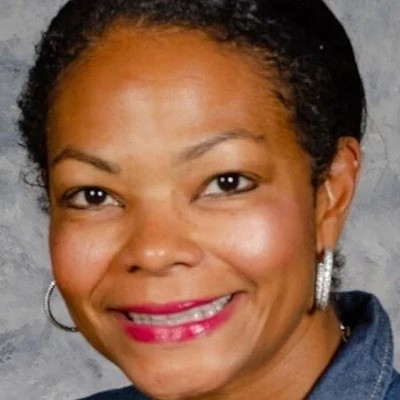She could tell it was close -- maybe some kids in the park across the street, messing around, tearing up the place. It wouldn't be unusual. She'd lived on East 120th Street for more than three years, and she had a sense of the neighborhood: whom she could trust, when she should stay inside, when she needed to keep an eye out for trouble.
And while she never felt in danger, Flonnory has never been comfortable with the endless parade of nighttime nuisances, especially during the summer. The fights in the park. The cars speeding up and down the street. The gunshots into the dead air of evening.
"You'll hear shooting, you'll hear kids fighting, fussing, gang fighting, dope dealing," she says. "A lot of stuff in the playground. The kids were just loud. It's loud."
When she heard the noise that August night, Flonnory stayed inside her bedroom, reluctant to move. It was only when she heard the police cars approaching several minutes later that she ventured toward the window.
She caught her breath when she saw the lights. Cruisers had gathered in front of the little yellow house down the street. Lisa's house.
Lisa Culbreath, her husband, John Knight, and their children had moved to the street soon after Flonnory. It didn't take long for the households to become close. In a place where people tended to themselves, the new neighbors had stuck together. "We looked out for each other," says Flonnory.
On that night, however, nobody could do much for Lisa and her family. Nothing except grieve.
The death of Warren Culbreath -- the result of a single stray bullet that tore through a wall in his house and hit him in the back as he ran up a stairway -- attracted considerable attention.
A 12-year-old boy who loved school and video games, Warren became the sad culmination of all the waste and the consequence of drug-fed violence. Mayoral candidates showed up at his funeral. City Council members drafted resolutions. Activists held a vigil in front of his home.
"So many people have written and called," says Lisa Culbreath. "It seems like everybody in Cleveland."
It was condemned as an act of senseless violence. Yet to many people who live in Warren's neighborhood, the shooting had its own perverse logic. In the streets around Moulton/Scoutway Park, it has been a shockingly violent summer. From late July to mid-August, four people were killed, all in an area of about 10 blocks, all in drug-related shootings.
Ask residents what it has been like to live here, and most just shake their heads, if they respond at all. A few say that nothing has changed, that the streets are quiet, that the violence was random. But most take a different view, admitting they're scared to go out much at night, anxious about even sitting on their front porches.
"It's not safe. You got a lot of property owners around here, they like the neighborhood," says Flonnory. "They want to stay around here. Well, they can have their neighborhood. If I hit the lottery, I'm gone."
Says one woman who lives near the spot where one body was dumped: "Some people moved in across the street a while ago. I wanted to tell them, 'Put that shit back on the truck and get the hell out of here.' Soon as I save $1,500, you're gonna see a U-Haul in front of my house."
Moulton/Scoutway Park doesn't look like a place where 12-year-olds get shot. A 4.5-acre swath of green grass, trees, and playground equipment, it stretches like an oasis between East 120th and East 115th streets, just south of Superior Avenue in Glenville.
University Circle, home to the city's cultural pillars -- the Cleveland Museum of Art, Severance Hall, Case Western Reserve University -- sits just to the south.
On a recent weekday afternoon, a cluster of uniformed kids from Mary M. Bethune Elementary scramble atop a brand-new-looking jungle gym in a part of the park that boasts swings and a couple of pristine tennis courts.
A mixture of new and old single-family homes lines the surrounding streets. In the light of day, the avenues have an ambiance closer to small-town America than to the epicenter of inner-city violence.
"It's a beautiful neighborhood," says Brenda Hunter, who has lived, off and on, a few blocks from Moulton Park since 1970. "There are beautiful homes. The scale is just right. It's not too big."
Parks and quaint houses are not the prevailing images most Clevelanders have of Glenville, however. Like Hough and Fairfax, Glenville isn't just the name of a neighborhood; it's a totem for inner-city blight and drug-fueled violence, reflexively mated to tragedy on the evening news and to jarring headlines in The Plain Dealer's Metro section. "People think it's like the Wild West or something," says Tracy Kirksey, executive director of the Glenville Development Corporation. "I am never afraid, walking or driving around Glenville."
"Anytime anything bad happens, everybody mentions Glenville," adds Tonya Allmond, who runs the Northeast Neighborhood Development Corporation, which develops homes in the area. "Sometimes, I think that people think all the East Side of Cleveland is Glenville."
This despite the fact that, over the last 10 years, Glenville has been home to many of the city's most conspicuous redevelopment successes. Shopping centers have been built, bank branches and grocery stores opened. "The amount of development in the last four years has been phenomenal," says Kirksey. "I don't know many neighborhoods in the city where you can see millions of dollars' worth of development in such a concentrated area."
And it's not just business development. During the last decade, no other area in Cleveland has built or refurbished more homes -- more than 300 in the last four years alone.
Nor is crime -- especially violent crime -- the force it once was. In 1991, there were more than 560 reported incidents of violent crime in Glenville, according to the Center on Urban Poverty and Social Change at Case Western Reserve University. By 1999, that number was 352, a 37 percent decline. By the end of the 1990s, you were more likely to be a victim of violent crime if you lived in Ohio City or Detroit-Shoreway than if you lived in Glenville.
Moulton Park and the streets surrounding it are emblematic of those changes. A decade ago, the park was nothing but dirt, rubble, and broken glass. A battered house once occupied a large chunk of property where kids now play. "When I was growing up, ever since I can remember, it was nothing, really," says Cleveland City Councilman Craig Willis, who was raised in a house on Beulah Avenue, on the park's northern edge. Several years ago, Willis secured $1 million to rebuild the park. Mayor Michael White showed up at the groundbreaking.
A spate of new housing has also made its mark on the neighborhood. On one street south of the park, there are six houses less than four years old. "We get a lot of people who are renting out in the suburbs who want to come back home, to live on the street they used to live on, or they want to be near their mom or their family," says Allmond.
Still, the area is not an undiscovered Valhalla. Much of Glenville's housing stock is more than a half-century old and deteriorating. Boarded-up storefronts line Superior Avenue and East 105th Street. More than 40 percent of the population lives in poverty. Drugs remain a consistent problem. Two years ago, Cleveland police recorded more drug arrests in Glenville than they had during any of the previous 11 years.
The schools are equally beaten. At Mary M. Bethune, for example, only 21 percent of fourth-graders passed the Ohio proficiency test in math during the 1999-2000 school year, 35 percent in science. Hunter, for one, recently moved to Euclid to provide her son a better education.
Admits Allmond: "I'm not going to fool anybody. I consider most of the people who have come back to live here as renaissance pioneers. They're making an investment, and they know what they're facing."
Shortly after 5 a.m. on July 23, Cleveland police were called to a parking lot near the corner of East 117th and Superior, two blocks north of Moulton Park. They found Kenneth Johnson Jr. and his girlfriend, Starr Hudson. Both had been shot in the head.
Two days later and two blocks away, Alfonso Amos was dumped from a car onto the sidewalk of East 115th Street near Beulah Avenue. When police arrived minutes later, they found Amos still alive, shirtless and bleeding from a gunshot wound to his chest. Before he died, Amos told police the name of the man who shot him.
The hunt for Maurice Freeman, the man pegged by the dying Amos, lasted less than 24 hours. Shortly before 10 p.m. that same night, police and federal agents entered an East 83rd Street home after receiving a tip that Freeman was inside.
Freeman, 23, has a record that includes everything from drugs to gang involvement to murder. Four years ago, he was implicated in a gang shooting of 15-year-old Benjamin McDougall. Instead of taking the fall, however, Freeman blamed it on Alfred Holly. With the help of Freeman's testimony, Holly was convicted and sentenced to 28 years in prison. Freeman was sentenced to six months in the county jail for aggravated menacing.
Around Freeman's Glenville stamping grounds, people aren't taking much solace in his capture. "Cherry," a middle-aged woman with salt-and-pepper hair, lives down the street from where Amos was found. She refuses to tell a reporter anything but her nickname. That Freeman faces two separate capital trials matters not. His friends are still around, and she worries about retribution.
The morning Amos was shot, Cherry woke up to see him lying on the sidewalk. She could see him gasping for air, hear him begging for someone to hold his hand. "It couldn't have been two minutes before the police got there, if it took that long," she says. "He kept saying, 'Hold my hand, hold my hand. I'm dying.'"
"I can't," she recalls one woman telling him.
Half a dozen people were standing around him. No one held his hand.
Cherry doesn't think much of her neighborhood these days. She has lived on East 115th for almost a year and has hated every day of it. At night, she sleeps on the floor, away from the windows, too afraid of the noises she hears outside. "It's quiet now," she says, waving toward the asphalt as it bakes in the midday sun. "At night, it's a whole different thing."
Night is when young men come out to sell drugs, to drink, to fight, to hang out in the park, she says. "A lot of these kids do whatever it takes to take care of themselves."
Her fear, like a germ, has spread to every part of her life. She used to let her dog roam in the fenced-in yard during the day. Now she keeps him on a leash, afraid he'll be shot if she doesn't.
She cannot wait to move. "This is hell right here, where we are right now. I don't want to see the other side of hell, 'cause I'm here right now."
Across the street, an old woman sits in her living room while her granddaughter watches Sesame Street. She used to get up early in the morning on nice summer days, sit out on the porch, and barbecue. "Can't do that anymore."
But the trouble started long before Maurice Freeman came along, she says. The neighborhood has suffered for years -- ever since many of the original homeowners died off and renters moved in. Drugs came with them. She remembers an incident several years ago. A car with some young men inside came speeding around the corner. A gun slid out of an open window and started firing. No one was hit. "We've seen a lot of trouble around here."
Indeed, this chunk of Glenville always seemed to have its share of trouble. It was here that, in 1968, police exchanged gunfire with a group of black nationalists led by Fred "Ahmed" Evans. The shootout resulted in seven dead -- including three police officers -- and 15 wounded. Sixty-three businesses were damaged in the four days of arson and looting that followed.
The area did not recover quickly. In 1988 The Plain Dealer did a retrospective on the riots. It found that, 20 years later, the population had declined, the poverty rate had risen, housing vacancies had tripled.
The problems were exacerbated by the city's lead-footed development efforts and the influx of gangs and crack in the late 1980s. It wasn't until 1987 that Glenville even had a community development corporation. "It was just forgotten. One of the big differences between Hough and Glenville is that, after the Hough riots, people pumped money into Hough," says Councilman Willis. "In some ways, I think there are still some scars from the riots today."
In the spring of 1998, Arrie Thomas moved to East 120th with simple wishes. She wanted a house, a nice yard, a fresh start. "It seemed like a quiet street."
She thought she'd stay forever, but the problems began almost immediately. Not long after she arrived, someone broke into her car and stole some CDs. A few months later, on Thanksgiving, she was at home with relatives when they heard a car making a strange noise outside. When Thomas looked out the window, she saw an old station wagon being driven by a young man. He was driving it through her front yard.
The nuisances didn't cease over time. One day, Thomas came home to find her dog wheezing and coughing up blood. Someone had beaten it, she thinks. Then there was the day in July a couple of years ago when someone threw lit fireworks on her porch.
As annoying as these incidents were, what bothered her most was the everyday stuff. All the times she saw young men breaking bottles in the park. The fact that she can't let her grandchildren go to the playground by themselves, though it's only 50 yards away. "Nobody told us it was going to be this rough."
Still, things were made easier by the friendship she'd developed with her neighbors, Linda Flonnory and Lisa Culbreath.
"We all looked out for each other," says Flonnory.
Yet they couldn't get away from the neighborhood's dangers. "We have sat out here on the porch, and people have rolled by here, 12 o'clock at night, and shot for no reason, just shot," says Flonnory. "Me and Arrie ran in the house. They just shot in the air. Just because they could, I guess."
For Flonnory, there was one saving grace to the search for Maurice Freeman this summer: For a brief time, the area was tranquil. "The streets were empty," she says. "This neighborhood was good and quiet. Kids were in the house. Cars weren't going up and down the street, like the neighborhood boys usually do. Everybody was afraid."
The tranquillity wasn't to last. Around 10 p.m. on August 15, three weeks after Freeman allegedly shot and killed Starr Hudson and Kenneth Johnson Jr., Warren Culbreath was standing on the front porch of his house, along with his sister, his stepsister, and a friend. A white car came speeding down East 120th Street past their house, chasing someone on a bike. At the southwest corner of the park, the car turned right and headed west down Kelton Avenue, still in pursuit. Halfway down the street, the car turned around.
That's when Warren's 17-year-old sister, LaShonte, first heard the shots. It looked, she says, as if people in the white car were firing into the park, just shooting into the air. The children ran inside. Once everyone made it, LaShonte slammed the door shut. "We're all safe," she thought. "We were all in the house."
But something wasn't right. On the stairway leading to the second floor, Warren was lying crossways. When LaShonte looked up, she saw the bullet hole in the wall.
Six days later, Sundiata Langford, Michael Jones, and JuJuan Norman were charged with Warren's murder. According to police, the three were shooting at the white car -- allegedly being driven by rival gang members -- when a bullet pierced the wall of Warren's house and hit him in the back.
In the shooting's wake, Warren's death became political: Mayoral candidates Mary Rose Oakar and Jane Campbell used it as a springboard to talk tough on crime; both called for more police officers to patrol the streets.
Others used it to condemn "wet," a drug combination that can include marijuana or tobacco, PCP, and embalming fluid. A week after Warren's killing, a vigil was held in front of his house by activists concerned about the drug's suspected role in a number of recent shootings.
The only people not using Warren's death for any purpose, it seems, are his family. They're not even using it as an excuse to find a new neighborhood. "We're not leaving," says Lisa Culbreath. "God blessed us with this house."
Others, however, aren't so generous. Linda Flonnory has long thought about moving. "I used to think, maybe I could pick my house up and move it somewhere else . . . If they're shooting, it could be me. I don't like feeling that way. After [Warren's death], I was scared to come down the steps."
Arrie Thomas has thought about it, too. The shooting has shaken her faith. "But I'm still hoping something good can come of this."
Craig Willis is hoping the same thing. It's a Tuesday night in September, just after 10 p.m. He is driving his black Lincoln around Moulton Park, looking for cops. "I'll bet you a nickel we don't see any," he says.
Willis, facing a half-dozen opponents in the Ward 9 council primary this fall, has proposed a resolution that would realign the police department's fifth and sixth districts. His ward is currently split by the two, but he'd like to see the entire thing covered by the sixth. The area around Moulton Park, south of Superior Avenue, is now in the fifth district.
The cops in the fifth don't seem to spend much time north of University Circle, in the streets where Warren Culbreath was shot, says Willis. "The fifth district, police come in when they're called, and then they get out. You don't see regular nighttime patrols."
Willis continues his drive, hitting the streets around the park. Despite the violence this summer, he says, the neighborhood is essentially quiet.
It is tonight. Besides some guys sitting on a porch, drinking beer, at a house on East 116th, there is nothing to hear or see. No fights. No cars speeding up and down the narrow streets. No loud music. No gunshots. There are also no police cars. There is only a patch of green grass and night air, and a place that doesn't look like somewhere 12-year-olds get killed.












